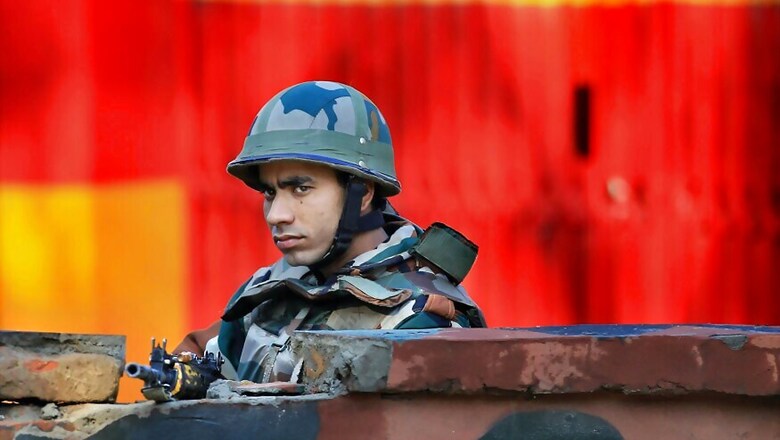
views
Ever since the Pulwama suicide attack in the valley on February 14, the militancy-hit state of Jammu and Kashmir is again on the boil with security forces cracking down on militants.
With at least 49 security forces personnel killed during the month, February was the bloodiest month for the security forces in the valley since September 2002 when 68 personnel had lost their lives in terrorist-related incidents of killings. In essence, February was the worst month for the security forces in nearly two decades since the peak years of militancy in the state during late 90s and early 00s.
After the Pulwama attack, which saw a suicide bomber hit an explosive-laden vehicle into a CRPF convoy killing at least 40 CRPF personnel, as many as four major encounters have taken place in J&K during the month of February. This resulted in the death of seven more security forces personnel during the later part of the month taking the total casualty even higher. Earlier, on February 12th, two security forces personnel were also killed during an encounter with the militants in Ratnipora, Pulwama, taking the months toll to 49.
In the same time period, as many as ten militants and one civilian were also killed during various encounters.
Additionally, the total number of security forces fatalities during the first two months of 2019 now stand at 51—only two security forces personnel were killed in January—which is more than half of the total 95 fatalities that occurred throughout 2018. The number of security forces fatalities in February this month is also more than the total security forces fatalities in 2014 (41) and 2015 (47).
The first major encounter after the February 14 suicide attack happened merely four days later at Pinglana village of Pulwama District on February 18. The gunfight, which began in the morning after a cordon-and-search operation by the security forces, claimed the lives of five personnel. These were identified as Major Vibhuti Shankar Dhoundiyal, Havildar Sheo Ram, Sepoy Hari Singh, Sepoy Ajay Kumar, and Police head constable Abdul Rashid. Eleven SF personnel, including a Brigade Commander, a Lieutenant Colonel and a Deputy Inspector General of Police, were also injured during the encounter in which one civilian and three Jaish-e-Mohammed (JeM) militants were killed.
Although the number of fatalities during February swelled due to the Pulwama attack, which was the largest of its kind since the attack on Srinagar secretariat in 2001, it is in line with the gradual increase in militancy-related violence in the valley in the past six years.
After a low in 2012, when the total fatalities in the state were 117, the number of killings have steadily increased to a staggering 451 last year which is a 285 percent rise over a span of six years. In fact, 2018 was the bloodiest year in the valley in a decade. In 2013, 2014, 2015, 2016, and 2017, a total of 181, 189, 175, 267, and 357 people were killed respectively, as per South Asia Terrorism Portal (SATP) data, a Delhi-based organisation which monitors violence in conflict zones including J&K. The data is primarily collected from news reports.
According to J&K Coalition of Civil Societies, another organisation which compiles data on violence in the valley, the numbers are even higher. JKCCS pegs the total number of fatalities during 2018 at a significant 586 which includes 159 SFs and 160 civilians and 267 militants.
However, the common factor between the two data sets is that the year 2018 as the worst year in the state.
The rise in security forces fatalities also points to the much important fact: renewed militancy in Kashmir is at its brutal stage, claiming lives from all the sides on an almost daily basis.
Another important finding is that security forces are losing more of its men while fighting militants in Kashmir. The ratio of militant–security personnel killings has been close to 2:1 for the last five years.



















Comments
0 comment